Text
My Interest in Uta Hagen’s Work
As a third-year student studying Theatre and Drama, a large part of my interest is discovering and expanding my knowledge on practitioners and techniques and then applying their teaching to my exploration of character. My personal approach to a character stems from naturalism and Uta Hagen’s techniques have an important role in terms of how an actor will approach a role naturalistically. Naturalism is defined as “a style of art or writing that show people, things and experiences as they really are.” (Oxford Learner’s Dictionary, 2021) The naturalism is executed by actions, set and characters that reflect real life, what an audience would see in their lives.
The purpose of studying Uta Hagen in relation to my final project is to succeed in a naturalistic portrayal of a character. In my experience and throughout studying my degree the most recognisable exercise from Uta Hagen would be the 9 W questions an actor should answer as character for preparation and detailed background. However, Hagen’s teachings expand far beyond just background for a character but elaborate on naturalistic techniques such as emotional memory and sense memory through ‘substitution’. I will mainly focus on Hagen’s techniques and teachings of object exercises which include the nine w questions, substitution, sense memory. I will expand on how these can be used for an actor in preparation for a role and workshops for the techniques to display how to apply them. These will also be applied to my own project and fulfil my aim to portray a character through naturalistic means.
Although my performance platform is not a theatre stage, but instead filmed, Uta Hagen’s methods can still be applied to my character approach. Films and television have a plethora of naturalistic storylines, settings, and characters. The prospect of bringing theatre to screen is not unheard or unseen. There are companies such as National Theatre who do this by recording a production and then screen it to cinemas and their website for audiences at home to watch. There are also productions such as BBC’s Alan Bennetts talking heads and ‘A Real Summer’ in 2007 produced by the BBC. Being able to adapt techniques from Uta Hagen to present characters in film acting is what intrigues my further study of Hagen’s naturalistic methodology.
0 notes
Text
Who Is Uta Hagen?
Uta Hagen started her career as an actor in the theatre and Broadway. After working on heavily naturalistic plays such as Chekhov’s ‘The Sea Gull’ at just eighteen, Hagen had developed a refined technique that could be taught to actors and evoke a believable performance. This was recognised early on by critics especially after Hagen’s performance in ‘A Streetcar Named Desire’ as Blanche DuBois, one critic wrote that Hagen had “the kind of performance acting textbooks could be built around.” Malague (2012) Hagen was a prevalent practitioner and taught amongst the likes of Stella Adler and Strasberg. Hagen taught in HB studios which was founded by her husband Herbert Berghof in 1946. Hagen is still celebrated in the very place she “honed her methods and mentored seven generations of artists and teachers.” (HB Studio, 2019)
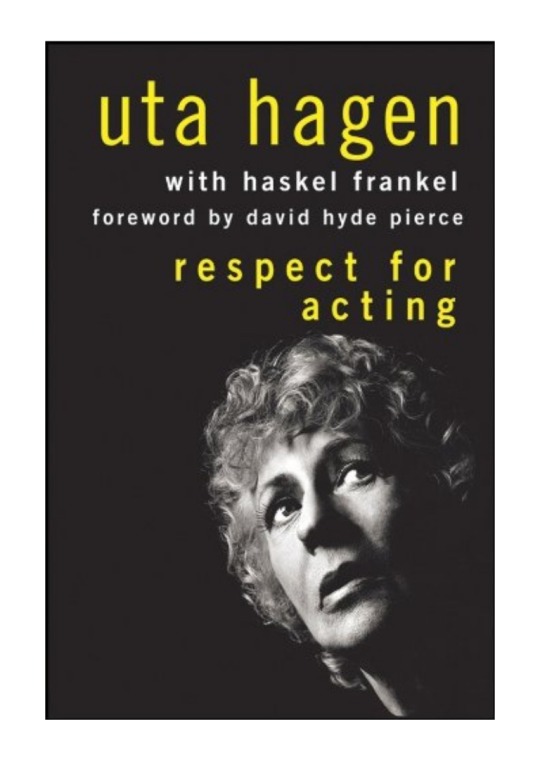
Hagen, U. and Frankel, H. (1973)
0 notes
Text
What is Uta Hagen’s Method?
Hagen’s methodology incorporates the ‘doing’, Hagen says herself that “to do is a synonym for to act.” Hagen and Frankel (1973) Hagen teaches that surrounding yourself in the environment of the character during the rehearsal stages and performance, she encourages the actor to “root themselves in real activities and create confidence through rigorous preparation.” (Ates, 2019) This includes having the real props and becoming familiar with them in action and relation to the scene and character. This was an aspect embedded not only into the training of the actor but Hagen’s own work, this is supported by Haskel Frankel who says when working with Hagen he recalls her saying “I want to have opened that refrigerator door a hundred times before I set foot in the stage”. Hagen and Frankel (1973)
This is taught as the ‘object exercises’, along side the nine W questions. This is when an actor will answer questions in relation to themselves or the character. This can also be varied depending on if you want to do a task as the character or yourself. Following these questions, the actor then prepares a moment. The task is set to “find and recreate two ordinary minutes out of life when alone” Hagen and Frankel (1973) These exercises help to explore “human behaviour, it’s discovery and enlargement.” Hagen and Frankel (1973)
Hagen’s technique of the ‘Nine W Questions’ where an actor must answer circumstance and background questions is commonly used to create and prepare the details of a character in a play. However, it can be used in the variety of sectors such as film and television. This sets out who the character is, their objectives and relationships to every other character. Not only does it prepare a backstory, but it also prepares the actors senses as to what is around them, what they can see and hear, how this will affect them.
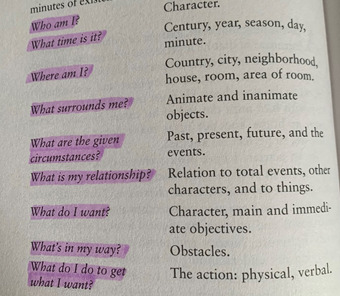
Hagen, U and Frankel, H. (1973)
These questions are crucial to a naturalistic performance, Hagen explains that these answers are “essentials to examine in order to define what makes this moment in my life evolve.” Hagen and Frankel (1973)
Below are examples of how these questions can be applied to Shakespearian text and contemporary text which I have worked, or I am working on. This is a simple but extremely rewarding technique to use in preparation for a character as it imbeds the factors that will motivate the characters objectives and actions. Hagen supports this in her teaching and explains that “Every one of them (questions) and many more influence and make this moment inevitable.” Hagen and Frankel (1973)

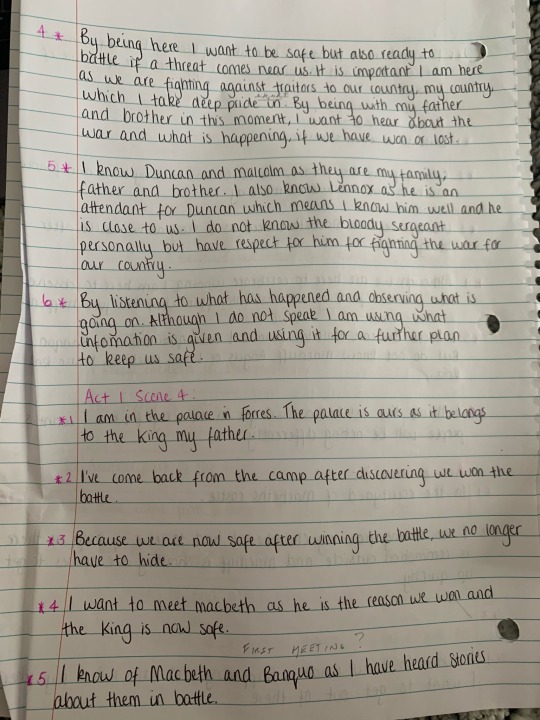
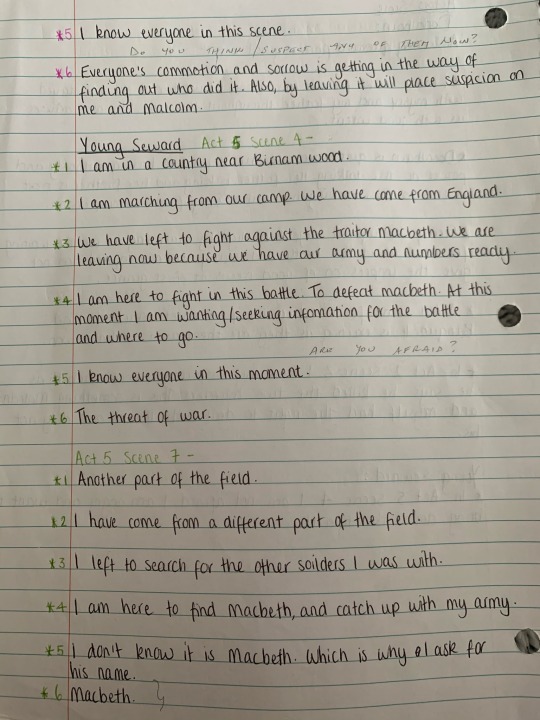
Substitution is a part of Hagen’s methodology that draws similarities to Strasberg’s viewpoint on the actor’s life experiences driving emotion for a character. Author Rosemary Malague further supports this saying Hagen “brings these two apparently disparate approaches together by placing new emphasis on the conscious merging of oneself with one’s role.” Malague (2012) Uta Hagen has developed this approach further and defines her teaching of substitution as “make believe in its literal sense- to make me believe.” And sees the exercise of substitution as a “hunt for an understanding of- and an identification with- the character’s main needs.” Hagen and Frankel (1973)
This is not only taught as a method for being able to cry on que or believably but “substitution can be used in every moment of the actor’s homework.” Hagen and Frankel (1973) Substitution is used by taking experience from an actor’s personal life for the imagining and actions of the scene, having objects and experiences to evoke real emotions. For example, Hagen depicts a scene where a character is looking out of the window and it is supposed to be raining. As an actor every detail of the rain must be so clear in the actor’s mind and if “you have experienced in your life you put it into the play at this moment.” Hagen and Frankel (1973) Hagen’s substitution technique delves deeper than emotional recall as it is not as mentally exhausting for an actor, it is “transferring the essence of the experience (not the original event) to the scene.” Hagen and Frankel (1973)
Hagen also explores ways to develop an actor’s senses and how one can “observe response to stimuli.” Hagen (1991) Much like substitution, sense memory is the technique where an actor can call on an experience physically to a character. Hagen explains that the importance of recognising how we react to stimuli physically is that it can “be stored in a treasure chest to be recalled and transferred selectively to a particular character’s stage life.” Hagen (1991) It can be difficult to feel conditions in climates that do not reflect or bring upon the condition the character is supposed to be feeling. For example, if it is the middle of winter walking along a street, an actor would need to portray the shiver of their body, blowing heat to warm up their hands all the while being on stage with the heat of lights and a room filled with an audience. So how would one do this accurately? Firstly, Hagen would encourage a focus on a real experience in the winter, what you saw around you, how did it make your skin and body feel? This preparation can then be put into physically enticing the sense and physical feeling. Hagen and Frankel (1973) explain that an actor must relax and settle their body, and then “concentrating on one area” of the body that it will affect. If it is cold what one point on your body do you feel it most? If you are tired, is it your eyes that feel heavy, do you yawn? If you are drunk, are your knees weaker and less stable? It is emphasised that it is “not your responsibility to show the condition, but to have it so you believe it, and deal with it in terms of the play’s action.” Hagen and Frankel (1973)
0 notes
Text
Sense Memory Workshop
For the sense memory exercise, it is crucial to warm up the body thoroughly with stretching and breathing exercises as the use of your body physically is crucial to this exercise. Using the Alexander Technique would be used for this warmup.
undefined
youtube
It is also important to focus your mind as it will be required to recall your own experiences with different conditions on your senses. This should take 10-15 minutes.
Next from with prepared different conditions on paper mixed into a pile choose one. Whatever condition is on the paper start to talk about an experience you have had with it or one similar to it. Remember to recall every detail, who, what, where, when.
Once this process has been done, start to physicalise the condition, placing focus in one area of the body. This condition can be done within your two-minute objective activity. How does this affect the actions in the activity, does it change your delivery, what you need and how you execute those actions?
Rationale:
I want to be able to achieve the portrayal of a condition such a being cold through experienced memory of this sense.
This exercise will develop how an actor will approach the conditions that are within a character’s circumstance. In this exercise we want to achieve understanding of what is motivating the actions of a character.
0 notes
Text
The Objective Workshop
For this exercise it is important to read page 91-94 of Uta Hagen’s Respect for Acting.
The object exercise will work in conjunction with answering the nine w questions beforehand. By answering the objective questions, you will have a more detailed understanding of the character.
Choose one activity that you do on a daily basis, making a cup of tea, making the bed, coming through the door from work.
For this it is important to have all the props and set that make the activity feel as natural as possible. If this is taking place in a theatre space become familiar with what you are using to create a natural space such as sliders as the door opening. Bring in props from home to help create the space.
Once the activity has been chosen it is important to warm up with stretches and breathing exercises. This helps to focus my mind and body for the physical action.
It crucial to rehearse it as much as possible and or when you are doing the activity in day-to-day life observe what you do, how it feels and why you are doing it. The activity should be no longer than two minutes.
Rationale:
The nine-question exercise will help with understanding in more detail what surrounds you, the circumstances and how this drives your actions, creating a more naturalistic moment.
This will refine a technique and help to understand a character’s moment and how their actions are driven because like you they are human and are driven by something even if it is a normal activity.
https://youtu.be/jsLtiJyxxX8
undefined
youtube
0 notes
Text
Plan Of Work
For my project I have the instinct to do a body of work that will be performative. As my interests and passion are acting for theatre and film, using these skills, and researching an acting technique to help with character development is what I want to focus on. I have previously done in depth research of Stella Adler, Meisner and Strasberg and I want to go further into my knowledge and research of Uta Hagen will help with this final project as her techniques especially the nine questions can be extremely helpful for creating character.
Much of my inspiration has come from Alan Bennet’s Talking Heads. A series of monologues set in single locations and presented to the camera, breaking the fourth wall. This aspect of the Talking Heads is commonly seen in theatre and the cross over is something I want to apply in my project.
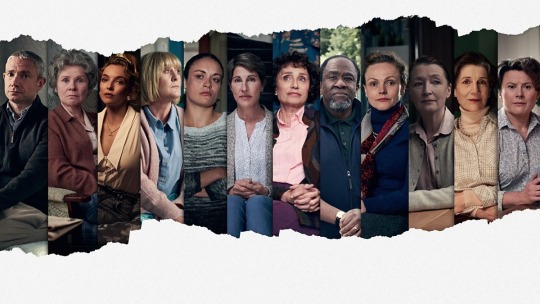
Alan Bennett’s Talking Heads (2020)
0 notes
Text
Mind Map Of Ideas

After mind mapping ideas, I have decided to create a story from scratch, creating one character, relaying the narrative. I want to take a different approach to the talking heads, rather than address the audience (camera) the dialogue will be a voiceover of the characters inner thoughts to the audience. Using Uta Hagen’s nine questions will help to elaborate on an idea and form a character from scratch rather than building from a published play.
0 notes
Text
Object Exercise
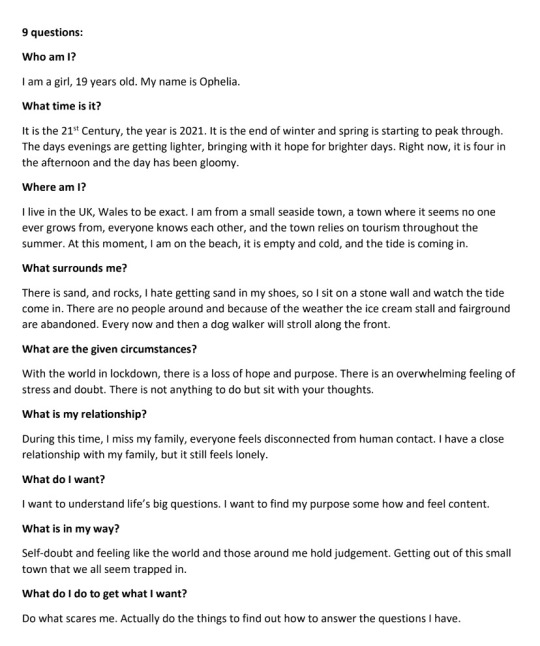
After doing the object exercise (see above) I started to create a character from those two minutes of ‘normal’ life. The character is lost in the sense of her purpose, the monotonous routine day after day has her asking questions about what she wants to do with her life.
Having this basic idea of the character and what her objective is I will complete the nine object exercise questions to develop a more detailed background of the character.
0 notes
Text
Shot list
I do not want the dialogue to be forced as it is a trail of thought the audience will follow. This is creative aspect is due to the voiceover rather than directly confronting the audience by addressing the camera.
As I am not scripting the project first as I am working visually with what I have imagined in my head, I will create a shot list for a small part of the piece. From this shot list and going to location to film on the beach, I will use Uta Hagen’s technique of a moment in the day, the character of my film, sitting, walking around her hometown. Once the shot list has been created, it will be filmed and produced into a short part of the project. This will help to navigate along with the object exercise, what my character wants, and if this is the vision I am intending for the project.
Shot list: Beach
Walking on the wall- wide shot
Sitting on the wall- close up
Screaming on rocks- panning/mid shot
Screaming on rocks- back perspective/ wide shot
Running to sea- back perspective/ wide shot
Running to sea- side perspective/ mid shot following
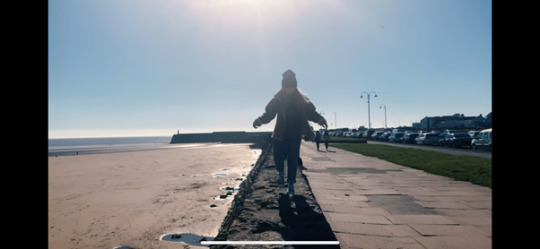


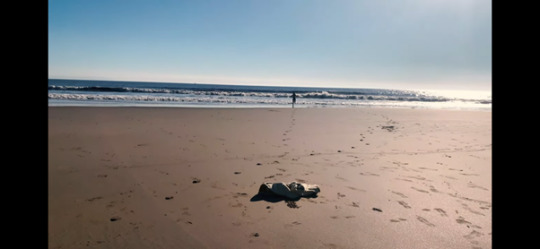

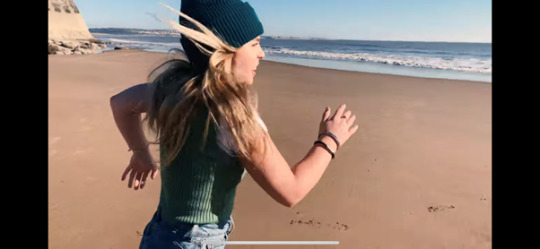
0 notes
Text
Script
After shooting a small part of my idea, when put together it achieved what I intended. The process of actually filming parts of my idea and the objective exercise at the location helped to create a script for the character

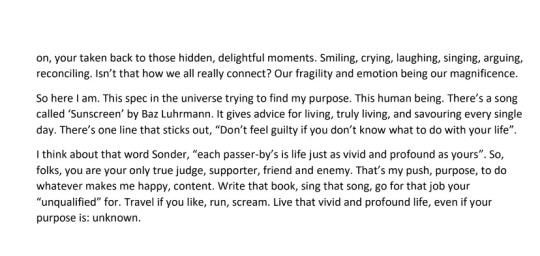
0 notes
Text
Next Steps
Having a script and an idea of the piece I can now create more shots and locations that I need to record. I will also need to the voiceover for the film. For this I will need specific equipment and editing software. I will use Adobe Premier Pro and Audition for my editing software and to record I will use a Snowball USB microphone to achieve the best quality.
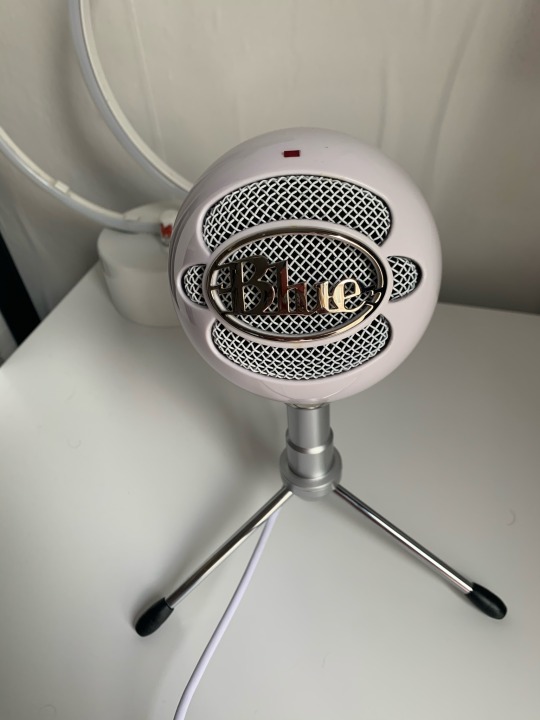
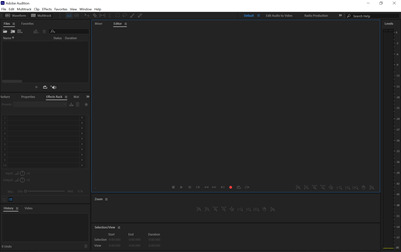

At this stage of my plan of work I have a second shot list that will be filmed at a later date. For these shot I will use Hagen’s sense memory technique to help me to portray the characters physical conditions.
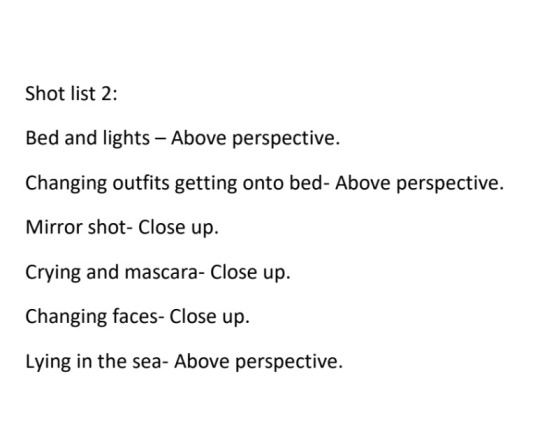
0 notes
Text
Bibliography
1- Ates, A. (2019) The Definitive Guide to Uta Hagen’s Acting Technique. Available at: https://www.backstage.com/magazine/article/the-definitive-guide-to-uta-hagens-acting-technique-68922/#:~:text=Hagen's%20technique%20is%20mainly%20designed,categorized%20as%20%E2%80%9CChekhovian%E2%80%9D (Accessed: 05/03/21)
2- Hagen, U. (1991) Challenge for the Actor. New York: Scribner.
3- Hagen, U. and Frankel, H. (1973) Respect for Acting. New Jersey: John Wiley and Sons, Inc.
4- HB Studio. (2019) Uta Hagen at 100. Available at: https://hbstudio.org/about-hb-studio/uta-hagen-100/ (Accessed: 05/03/21)
5- Malague, R. (2012) An Actress Prepares. New York: Routledge
6- Nichols, E. (2019) Alexander Technique Exercises. Available at https://youtu.be/7jybmoPHOKM (Accessed 9 March 2021).
7- Oxford Learner’s Dictionary. (2021) Naturalism. Available at: https://www.oxfordlearnersdictionaries.com/definition/english/naturalism#:~:text=%2F%CB%88n%C3%A6t%CA%83r%C9%99l%C9%AAz%C9%99m%2F,on%20spiritual%20or%20supernatural%20ones (Accessed: 09/03/2021)
0 notes